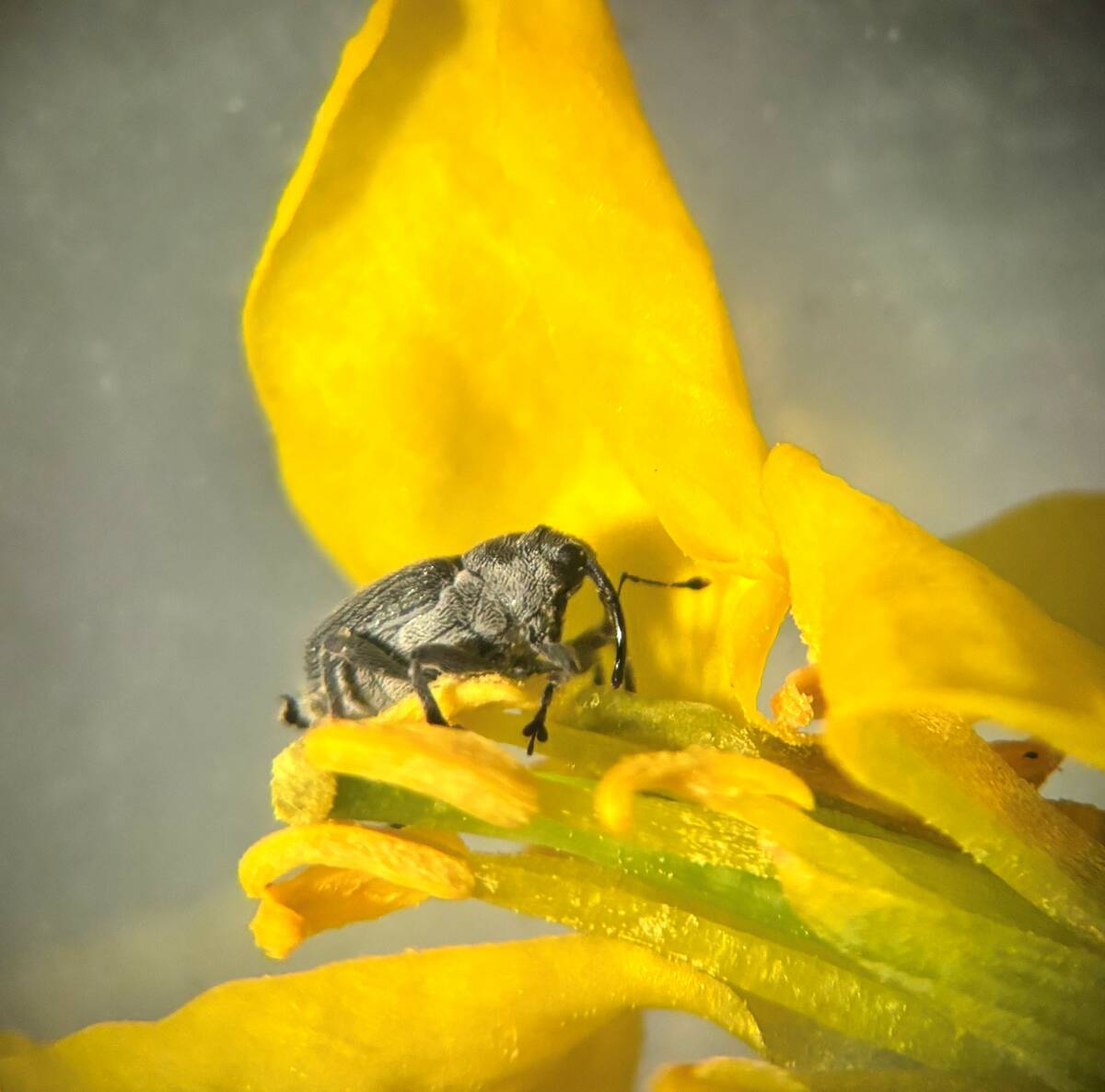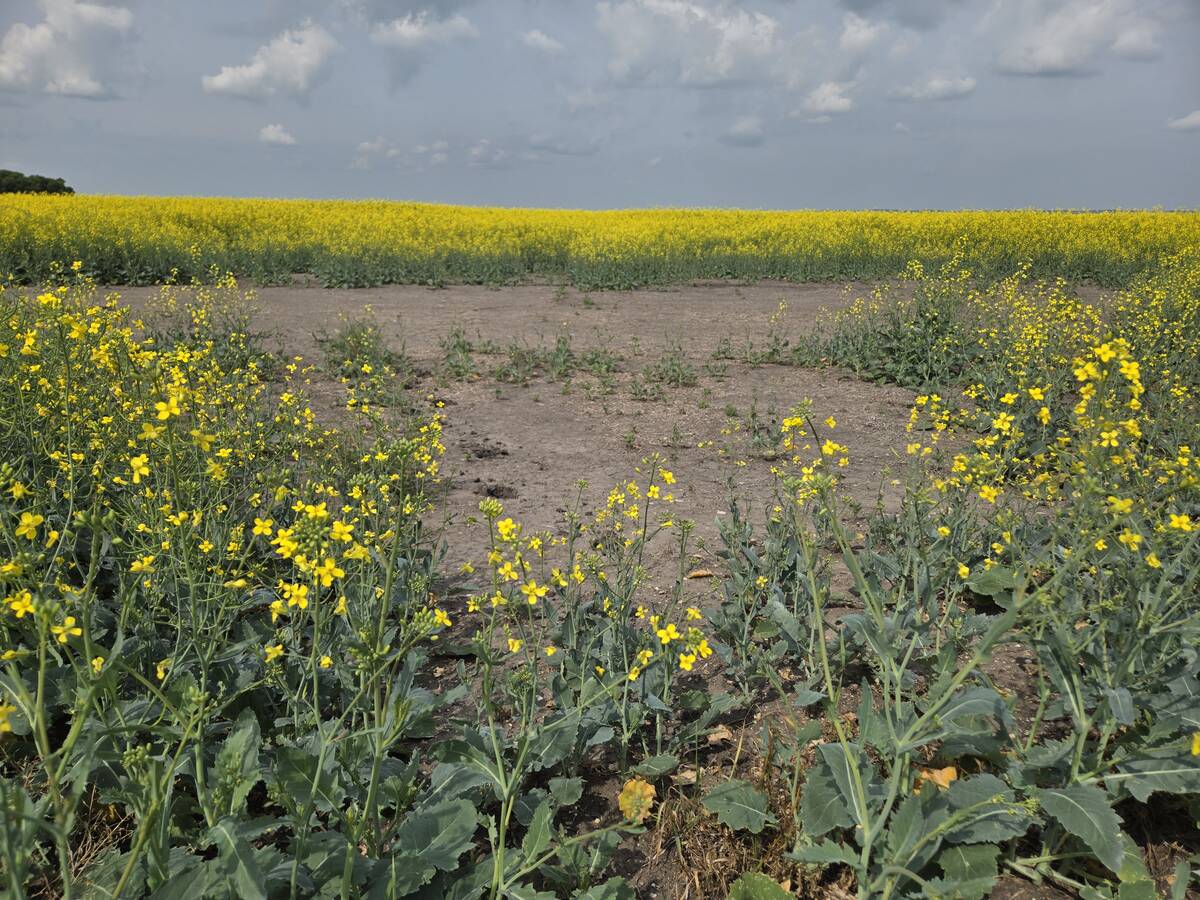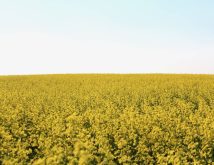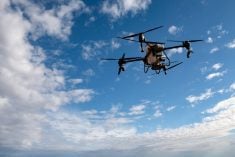Cabbage seed pod weevil aren’t usually among Manitoba’s big canola pests, but this year, there’s been a notable surge in the insect’s population.
Manitoba Agriculture entomologist John Gavloski says he knows of at least one field that topped economic thresholds for the pest. It’s the first time that’s happened.
WHY IT MATTERS: Cabbage seed pod weevil is still a relative newcomer to Manitoba.
Read Also

Manitoba boosts stake in cereals centre to $23.5 million
Premier Wab Kinew said the additional project funds will help ‘Trump-proof’ the provincial economy.
Entomologists have been watching cabbage seed pod weevil in the background for several years. In 2020, the province noted it as one of several new pest insects on their radar. It had jumped to western Manitoba in 2017, having already dug a niche in Saskatchewan.
But while of interest, they weren’t really a threat. Back in 2020, Gavloski noted that his scouting trips at the time often yielded one or two cabbage seed pod weevils in 10 sweeps of the net.
This year though, surveyed populations are “dramatically up,” Gavloski said during a July 16 crop talk webinar.
A field just outside of Carman in south-central Manitoba tested at 229 weevils in 25 sweeps. Thresholds trigger at 25-40 weevils per 10 sweeps. Even fields testing below treatment levels showed significantly higher populations than normal, Gavloski said, although most still lingered well below the threshold.
“Until this year, we’ve had trace levels where if we swept hard enough, we could find a few, but that was it. So, nowhere near thresholds,” he said.
Weevil crop damage
The weevil feeds on developing canola pods, potentially reducing yields if left unchecked. Each larva consumes about five seeds during its development, according to the Canola Council of Canada. Infested pods are also predisposed to premature shattering, increasing loss.
It’s not native to Canada. Originally from Europe, cabbage seed pod weevil has been creeping north and east since it was first found on the Prairies in 1995 near Lethbridge, Alta.
The canola council now reports established problems as far north as Drumheller, Alta., and as far east as Kindersley, Sask. \

Scout first, spray second
Before farmers spray, they want to make sure they actually have an economically damaging problem, Gavloski said.
Manitoba Agriculture notes that spray timing for cabbage seed pod weevil is at flowering. The only registered products for cabbage seed pod weevil though are broad-spectrum pyrethroids and beneficial pollinators might be caught in the crossfire.
Pollinators boost canola yields, Gavloski noted. The farmer might be getting rid of a pest that isn’t numerous enough to hurt profit at the cost of beneficial insects that would pad their bottom line.
“Don’t just figure because you’ve heard there’s some seed pod weevil around, you’ll … mix something in with your fungicides and not worry about it. You could cause more harm than good,” Gavloski said.
Growers who do need to spray should do so as late in the day as possible to minimize risk to pollinators, Gavloski added.
Proper scouting and treatment timing
The recommended scouting method involves sweep netting at four locations within each field. The Canola Council of Canada advises sweeping between 11 a.m. and 5 p.m., when temperatures are above 20 degrees Celsius and insects are most active.
Timing of treatment is critical. The council suggests targeting adults when crops are in 10-20 per cent flower to avoid eggs being laid in newly formed pods.

Manitoba canola fields show wide variation in development stages due to an extended seeding window, with some fields still at early bolting while early seeded crops are podding out, as of the July 15 provincial crop report.
Early-flowering fields face higher infestation risk, as adult weevils are attracted to the first available yellow canola flowers. The canola council recommends controlling brassicaceous weeds and volunteer canola before the bud stage to reduce alternative host plants that can harbour the pest.















